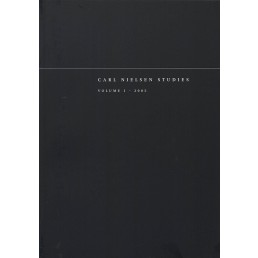Stasis and Energy. Danish Paradox or European Issue?
DOI:
https://doi.org/10.7146/cns.v1i0.27727Abstract
In examining Carl Nielsen’s expressive intentions and formal strategies in an interdisciplinary and historical context, this article shows how closely Nielsen’s aspirations and practice parallel those of his European contemporaries. One strand of this interrelationship between art and its social context is manifest in the recognition by philosophers, Kierkegaard perhaps the first amongst them, of the value and significance of right-brained thought, the experience of life, as a legitimate object for consideration and understanding, where previously only leftbrained, objective thought had been considered worthy of the philosopher’s attention. Tracing Nielsen’s developing interest in the embodiment of experience and feeling in the form and substance of his art, not just in its narrative content, it is argued that traditional linear analysis is inadequate to describe Nielsen’s symphonic writing, and that a ‘three-dimensional’ model that can also account for the expressive meaning and value of relative levels of activity, ‘stasis and energy’, is required. By contrast with Nielsen’s success in developing musical forms that embody these ‘concerns of the time’, Danish ballet, one of the great achievements of the Golden Age, faded from sight during the same period. The article asserts Nielsen’s place within the broad range of European cultural life by contrasting it with the uniquely Danish survival of a form whose particular expressive character led to its disappearance or transformation nearly everywhere else.Downloads
Published
2003-04-10
How to Cite
Roth, C. (2003). Stasis and Energy. Danish Paradox or European Issue?. Carl Nielsen Studies, 1. https://doi.org/10.7146/cns.v1i0.27727
Issue
Section
Articles
License
- Authors retain copyright and grant the journal right of first publication with the work simultaneously licensed under a Creative Commons Attribution License that allows others to share the work with an acknowledgement of the work's authorship and initial publication in this journal.
- Authors are able to enter into separate, additional contractual arrangements for the non-exclusive distribution of the journal's published version of the work (e.g., post it to an institutional repository or publish it in a book), with an acknowledgement of its initial publication in this journal.

